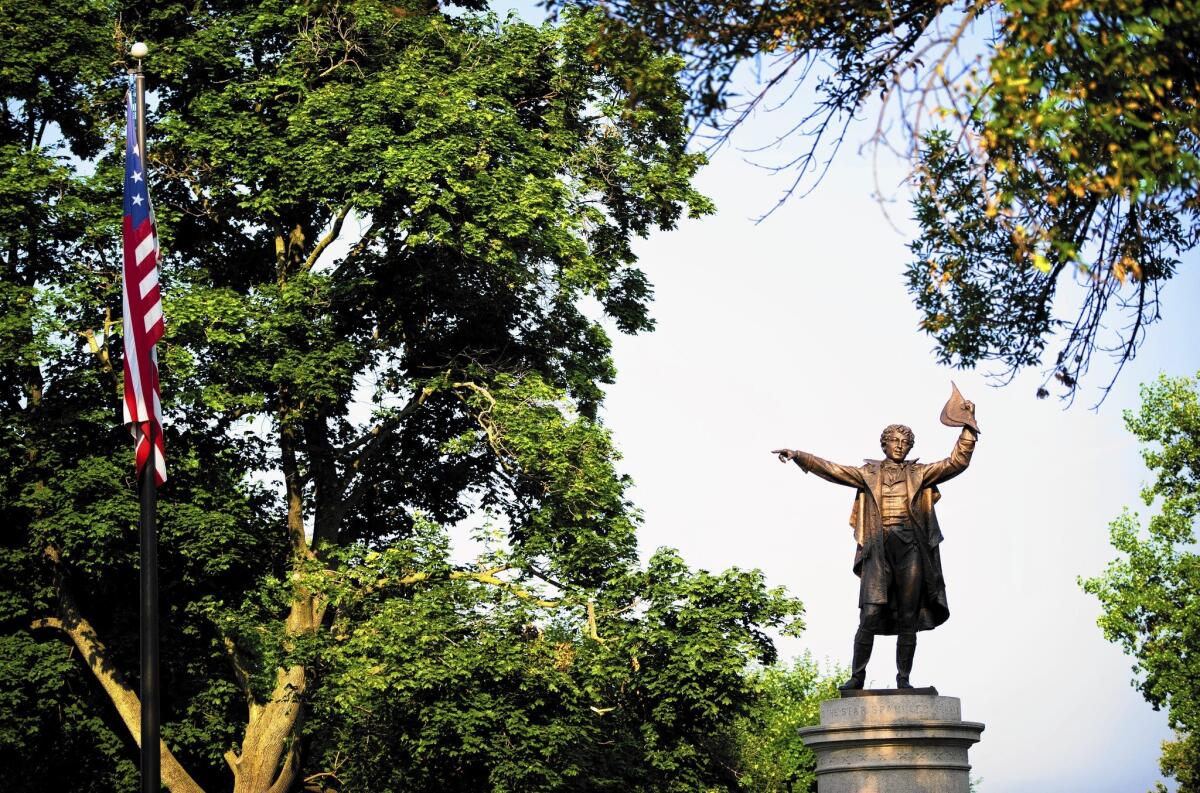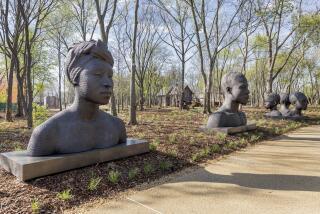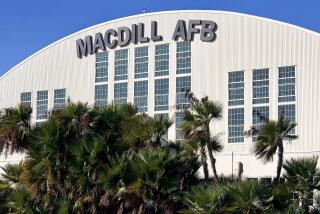A place of tribute to Francis Scott Key, west of Ft. McHenry

Francis Scott Key is so closely identified with Ft. McHenry that the south Baltimore landmark is considered the go-to place to learn how the 15-starred American flag that flew after the fort’s bombardment 200 years ago inspired him to write the poem that became the national anthem.
But those wishing to pay respects to the lawyer-turned-poet could also head 50 miles west to Frederick.
“Key always wanted to be buried in the shadow of the Catoctin Mountains,” said Ron Pearcey, superintendent of Mount Olivet Cemetery. After watching over the Key Monument for nearly half a century, Pearcey says he’s seen an uptick in visitors this year, the bicentennial of the Battle of Baltimore and the British bombardment of Ft. McHenry.
While Baltimore plans its Star-Spangled Celebration in September with tall ships, concerts and an air show to commemorate the U.S. victory in the War of 1812, Mount Olivet will host a remembrance of its own — focused on Frederick County’s most famous son.
The graves of Key and hundreds of veterans of the second war between the United States and Britain will be marked with torches Sept. 13, and fireworks will be launched from nearby Harry Grove Stadium, home of the minor league baseball Frederick Keys.
Maryland’s first governor, Thomas Johnson, is buried at Mount Olivet, as is Barbara Fritchie, who is said to have waved a Union flag before Confederate Gen. Stonewall Jackson’s troops as they marched on Frederick during the Civil War.
Key and his wife are entombed in a crypt covered by a grassy mound just inside the cemetery gates. On top is a bronze statue featuring a wavy-haired likeness of Key pointing to a nearby American flag with one hand and clutching his hat with the other.
At the base of the monument is a statue of Columbia, the female representation of the United States. She is flanked by the statues of two boys, one holding a sword and the other a lyre, to represent war and the arts.
Signs nearby recount key moments in Key’s life and the War of 1812. One allows visitors to play a recording of the “Star-Spangled Banner.”
Pearcey believes visitors are drawn to the memorial by the story of Key, an amateur poet who found his greatest inspiration in the American defense of Ft. McHenry during a night of shelling by British ships, and the flag that waved triumphantly over the installation the next day.
He says he sees license plates from all over the country: Texas, Washington state, Oregon.
When visitors stand at Key’s burial site, he said, “I think it kind of sends a chill down their spine.”
Key’s place in American history is complicated. As depicted in a new biography by historian Marc Leepson, the patriotic poet was a slave owner who staunchly opposed abolition.
As a lawyer, he represented slave owners seeking to recover their “property.” His zealous prosecution of a young black man accused of trying to kill his mistress is blamed for helping set off a race riot in Washington.
He dubbed America “the land of the free.” But in the little-remembered third stanza of his poem, he decried the “foul footsteps” of the slaves who had fought on the side of the British.
At the same time, he offered his legal services free of charge to African Americans who fought for freedom under a law that prohibited slave owners from bringing their human chattel to Maryland.
And during the Snow Riot of 1835, he stood in front of a jail door and faced down the lynch mob that wanted to skip the trial and hang the suspect.
“Key was an important player in the young republic,” Leepson said. “He helped shape the national debate on slavery, which was the No. 1 overriding issue of the day. But his legacy regarding slavery was cloudy.”
Key didn’t always have a grand resting place.
Initially, after Key died at his daughter’s home in Baltimore in 1843, he was buried at the cemetery at St. Paul’s Church downtown.
About 20 years later, his remains were moved to Mount Olivet, then a new cemetery shared by several of Frederick’s churches, which were running out of space in their own cemeteries.
Key’s first grave at Mount Olivet was unremarkable, which perturbed local leaders, Pearcey said.
They launched a campaign to raise money for a more fitting memorial; schoolchildren donated their pennies. The monument they bought, sculpted by Italian immigrant Pompeo Coppini, was dedicated in 1898.
“It’s our piece in the story,” said Chris Haugh, an official with the Tourism Council of Frederick County.
Haugh said Frederick was where Key made a rare public comment about his poem. He was speaking at a political fundraiser outside the courthouse.
“He looked out at the crowd and said, ‘I see a lot of guys who raised arms for the militia. I was just doing what was natural to me, putting pen to paper,’” Haugh said. “‘It was you who raised arms, who protected our freedoms.’”
More to Read
Start your day right
Sign up for Essential California for news, features and recommendations from the L.A. Times and beyond in your inbox six days a week.
You may occasionally receive promotional content from the Los Angeles Times.






